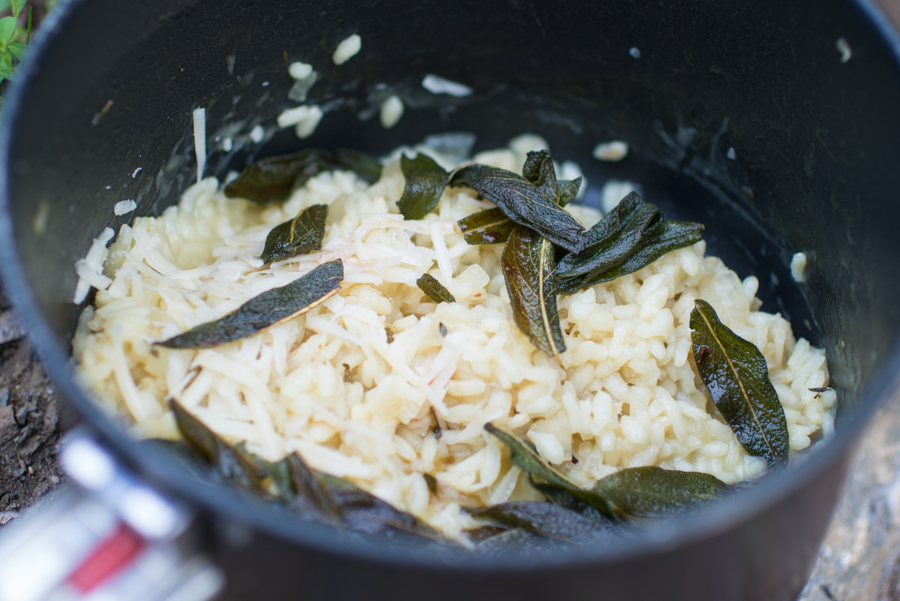Risotto with Browned Butter Sage Leaves
Photos and words by Tara Alan
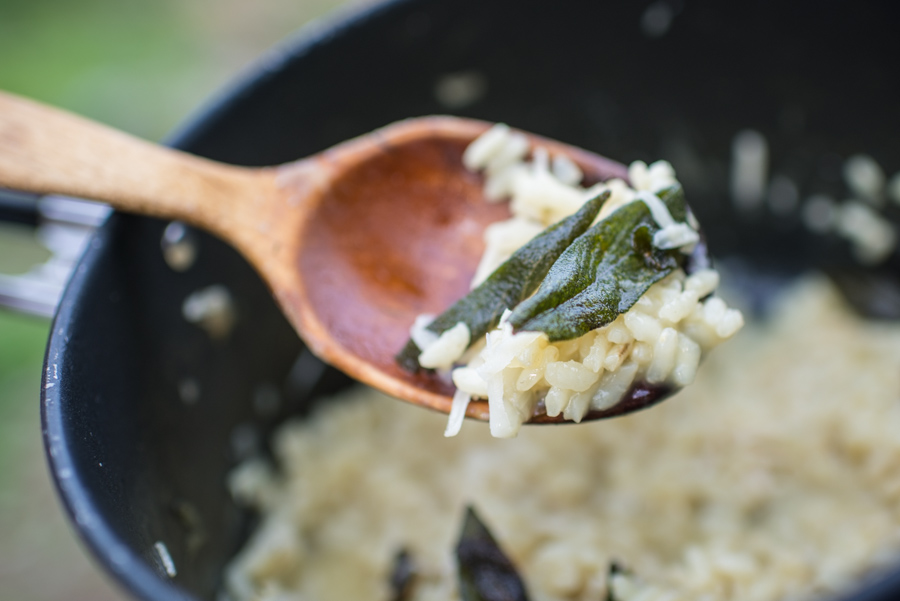
One easy, satisfying meal to make on the road is risotto. In this Italian favorite, buttery, herb-kissed short grain rice is simmered in chicken broth until it’s fully cooked and a flavorful puddle of broth remains at the bottom of the pot. This delicious rice dish is so simple to make, it was one of the first meals I ever made as a kid learning to cook. My camping-friendly version is inspired by that first recipe, found in Alice Waters’ Fanny at Chez Panisse.
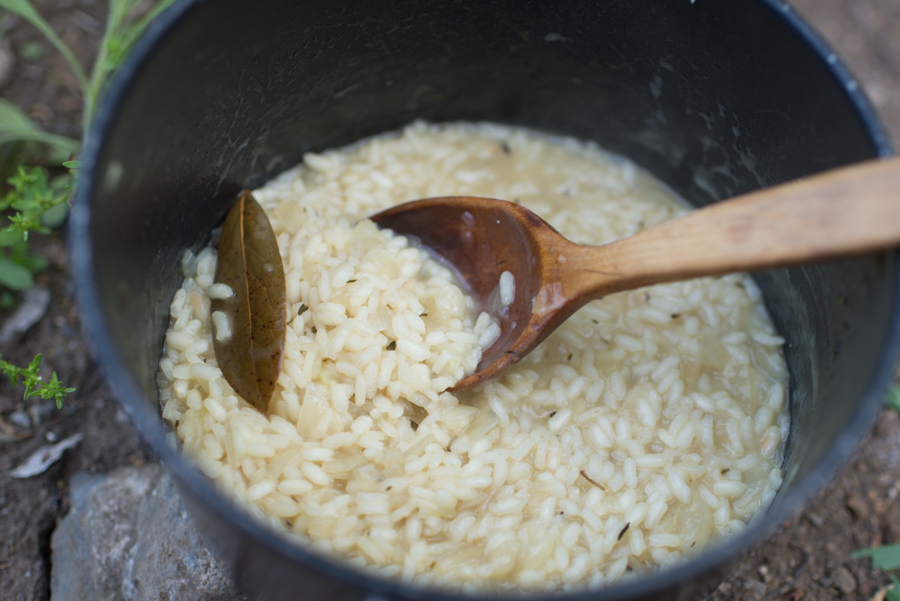
While I love the simple hominess of risotto on its own, it can also act as a jumping-off point for you to explore other flavors, in the same way you could concoct just about any topping for a pot of pasta. One option for a risotto accompaniment is a foraged one: when I’m on a bicycle tour or hiking in the forest around my home in Vermont, I’m always on the lookout for edible wild foods I can safely identify and conscientiously harvest. Why not try doing the same?

If ramps (wild leeks) are in season and you’re in an area where you can ethically pick them, why not sauté them and serve them on top of the rice?
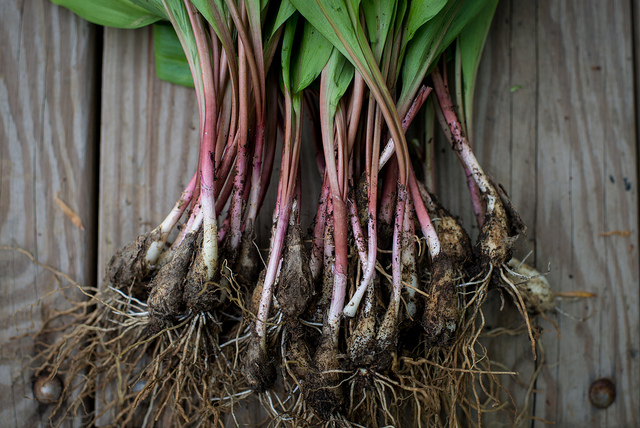
How about young spring nettles, quickly blanched in boiling water to render them stingless, and then cooked with olive oil and garlic? What about the earthy, rich goodness of sautéed morel mushrooms?
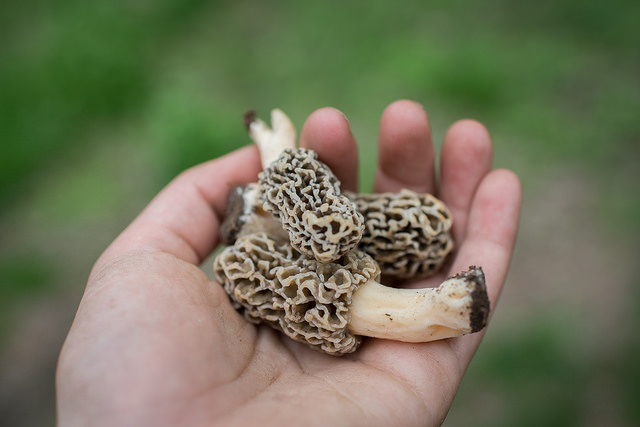
Safety—both your own, and that of your natural surroundings—should be your first priority while foraging. Carry along a small foraging book, or consult a foraging app so you know what’s what, and when it can be picked. With a little knowledge under your belt, and a bit of an adventurous gourmet streak, you can add all sorts of flavors to this simple little dish.
As summer rolls around, and the springtime glut of woodland food abates a little, I turn more to the farmer’s market and farm stand for my culinary inspiration. When produce and herbs are at the peak of freshness, it’s easy to make any number of risotto toppers.
The accompaniment I provide here is one of my favorites: fragrant sage leaves fried until crisp and shattering in a pat of butter that browns as it melts, becoming dark and nutty. If you’ve never tried a crispy fried sage leaf before, you’re in for a real treat. Let’s get started!
__
Basic Risotto
- 1 medium onion
- 10 tablespoons rice, Arborio is best, but short grain white will work too
- 1 tablespoon olive oil
- 1 tablespoon butter
- 1 bay leaf
- 1/4 teaspoon dried thyme
- 3 bouillon cubes
- Approximately 20 ounces of water from a water bottle
- A hunk of good parmesan cheese (optional)
- Black pepper to taste
Browned Butter Sage Leaves
- 1 tablespoon butter
- ½ bunch sage, or approximately 26 leaves
__
First, slice the onion from root to tip using a good sharp camping-friendly chef’s knife. Discard the peel and the ends, and mince the onion into small chunks. Add the onion to a large non-stick cooking pot . Measure the rice into the cooking pot as well, along with a tablespoon of olive oil and a tablespoon of butter. Add the bay leaf and thyme, and finally, unwrap your bouillon cubes and toss them in.
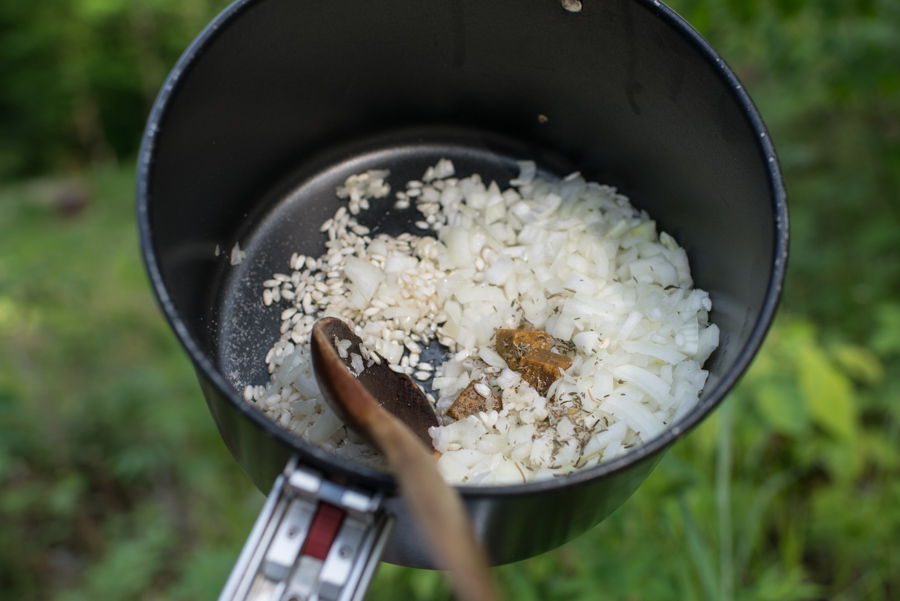
Prime and light your stove, and turn it to a very low setting. Place the pot on the flame to heat. Stir it very frequently, cooking until the onion is translucent and soft.
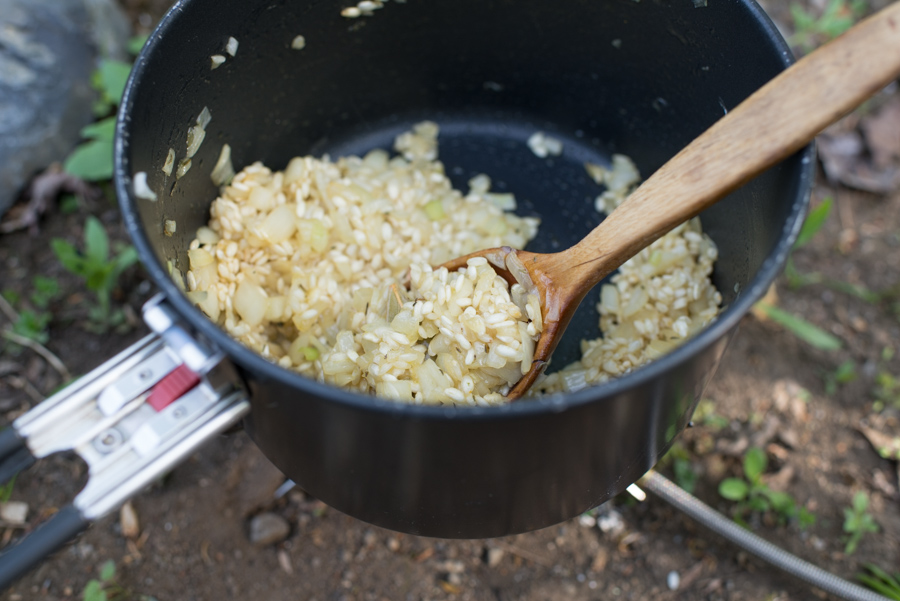
Next, you’ll begin the process of cooking the rice. Pour some water into the pot—not a lot, but just enough to cover the rice.
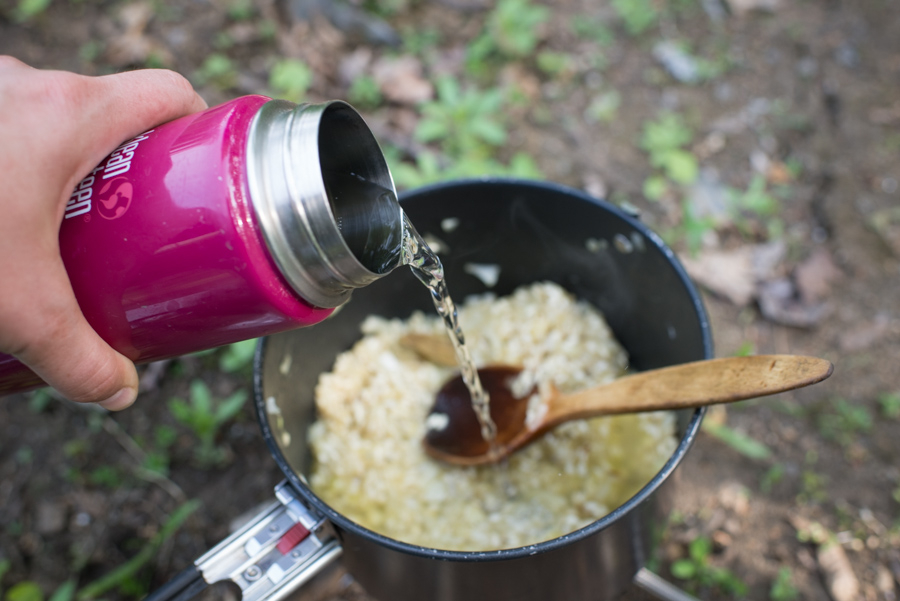
The rice will bubble and boil. Give everything a stir now and then as the rice absorbs the water. After a few minutes, when there isn’t much water left, repeat the process, adding just enough water to cover the rice. Keep stirring occasionally so nothing sticks.
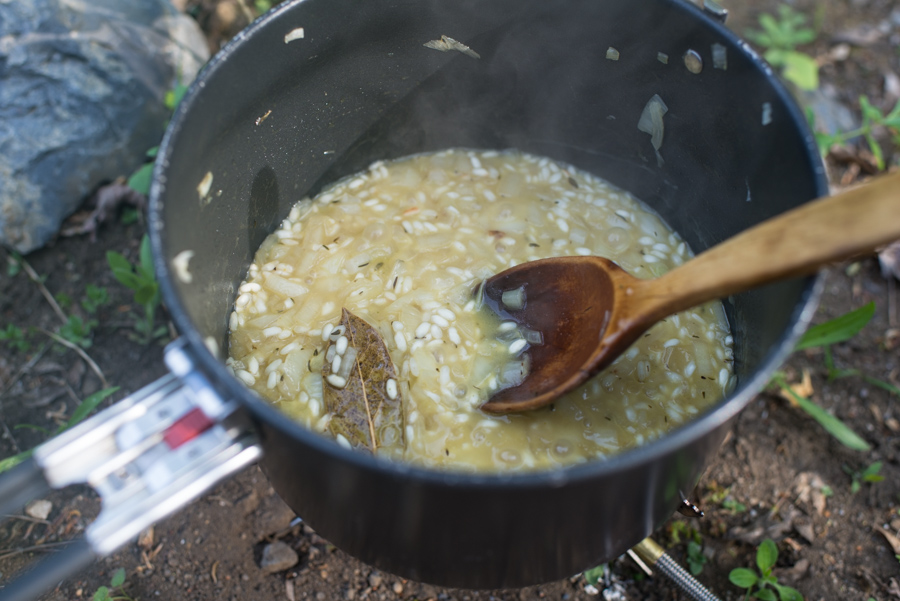
While the rice is cooking, prepare the sage. In a smaller non-stick pot, add a tablespoon of butter, and pluck the leaves off a half a bunch of sage, until you have about 25-30.
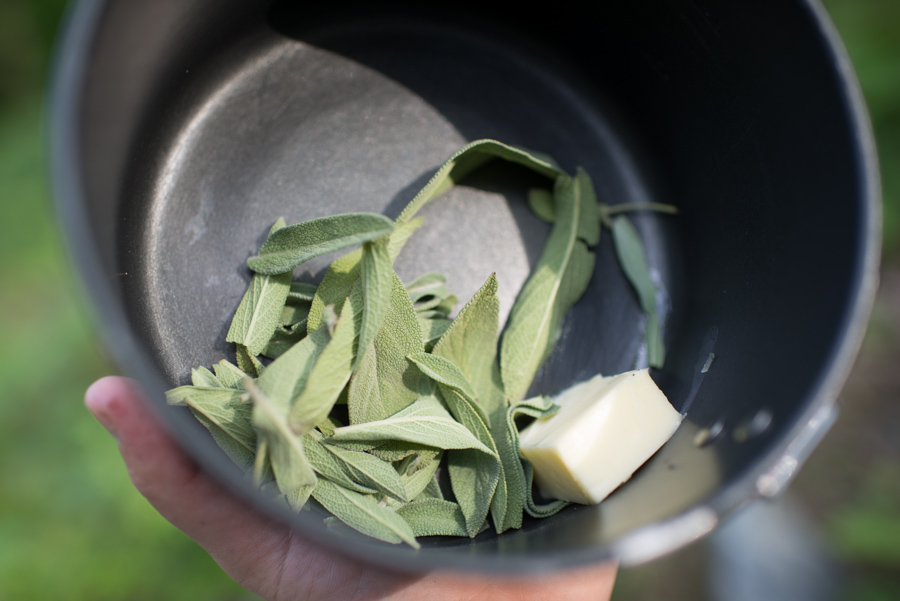
Set the pot aside for now, and come back to the rice. After a couple of water additions, taste the rice. Keep adding water and letting the rice absorb it until the rice is cooked to your liking. Remove the pot from the heat, and fish out the bay leaf, discarding it. Now, turn your attention back to the sage leaves.
Set the pot of butter and sage on the flame, and stir gently.
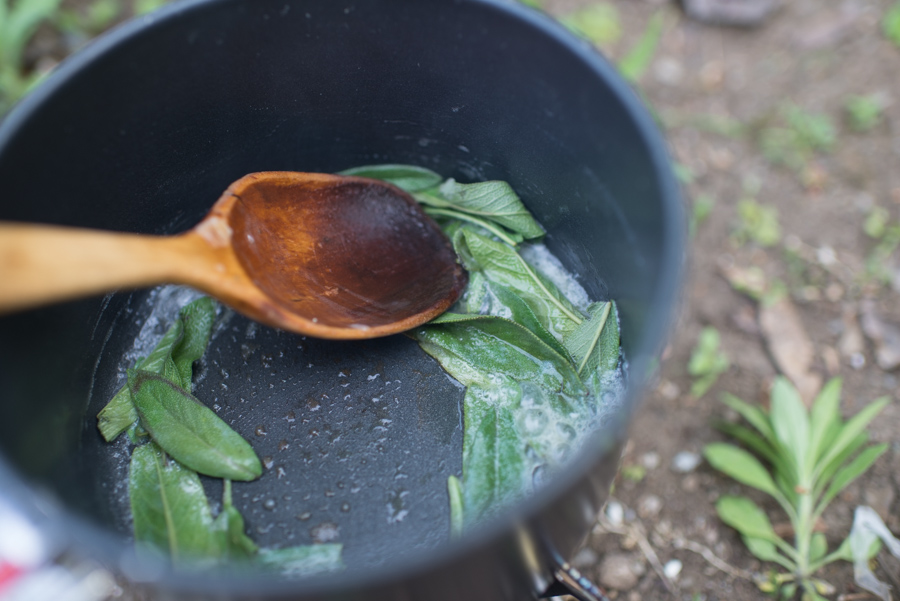
Continue until the butter is brown and melted, and the sage leaves are crisp and golden around the edges.
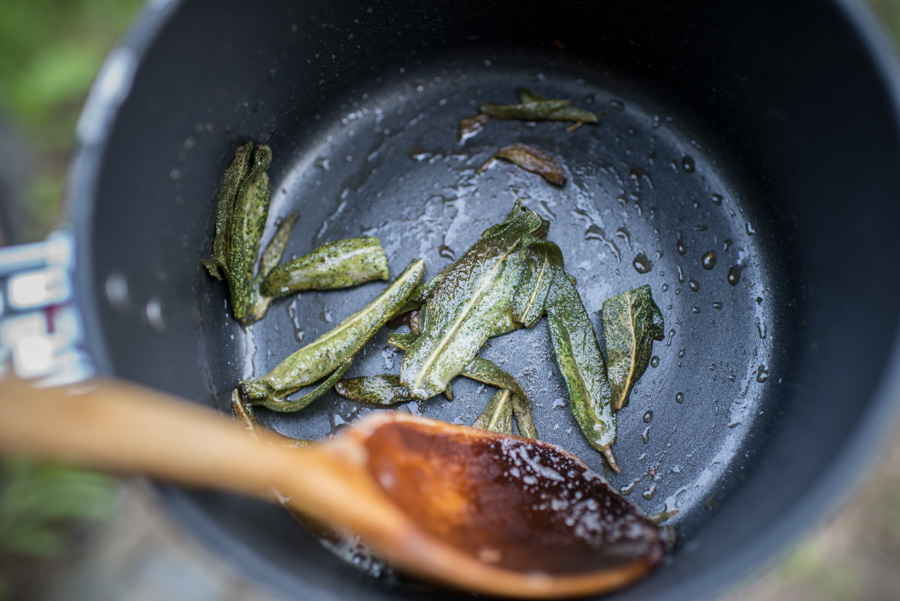
Sprinkle the leaves over the risotto, and grate some good parmesan cheese on top, if you’ve got any.
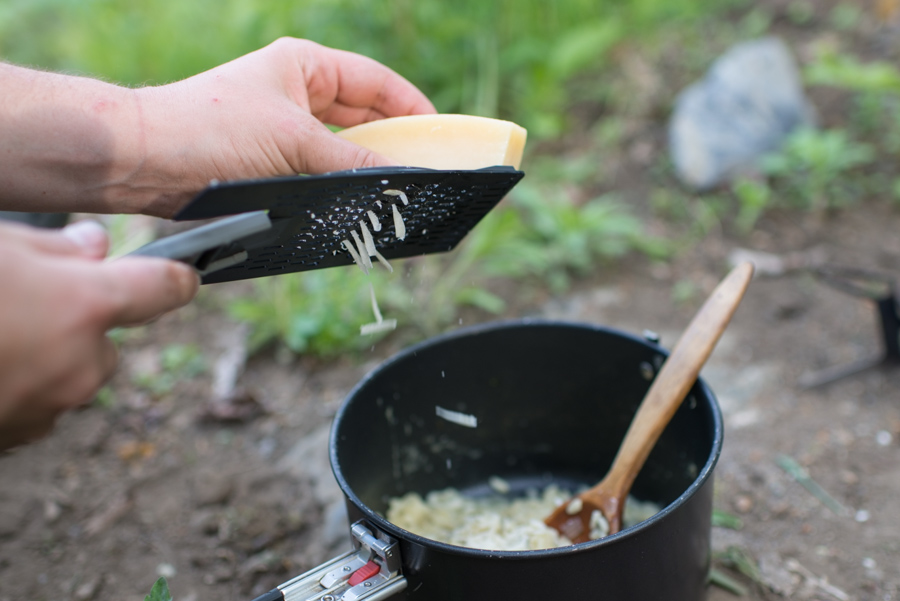
Ta-da! You’re ready to chow down.
